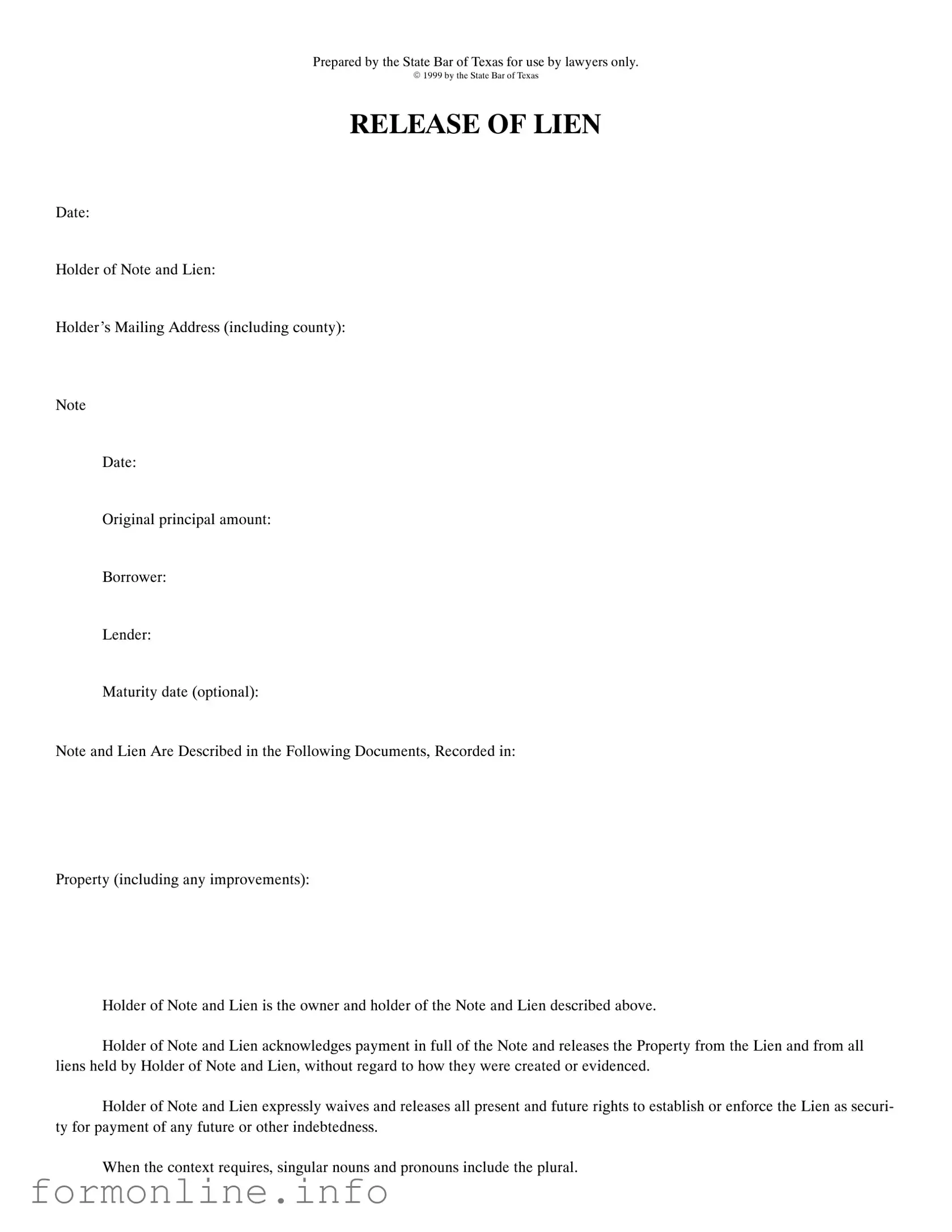The Release of Lien Texas form serves a crucial role in the process of clearing a property from financial claims, ensuring that the borrower can move forward without lingering obligations. This form is specifically prepared for use by attorneys and provides a structured way to document the release of a lien held by a lender. Key details included in the form encompass the date of the release, the identity of the holder of the note and lien, and their mailing address. It also specifies the original principal amount of the loan, the names of the borrower and lender, and the maturity date, if applicable. Importantly, the form acknowledges that the holder has received full payment of the note, thereby releasing the property from the lien and any associated claims. Furthermore, it includes a waiver of future rights to enforce the lien, ensuring that the borrower is free from any further financial encumbrances related to that debt. The document concludes with sections for notary acknowledgment, which lends it legal validity, and instructions for returning the form after recording. Overall, this form is an essential tool in facilitating clear property ownership and financial freedom for borrowers in Texas.
